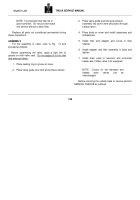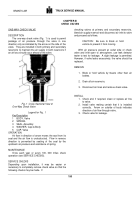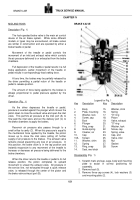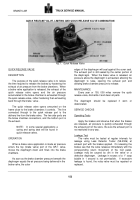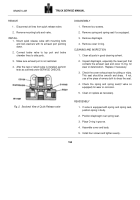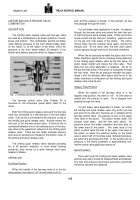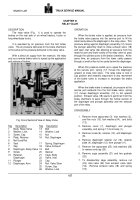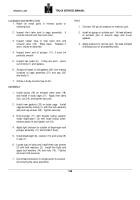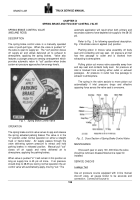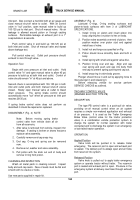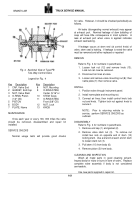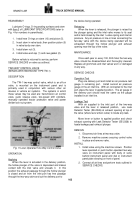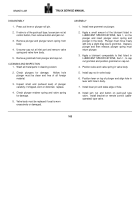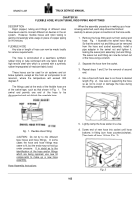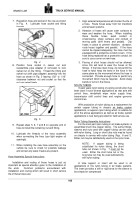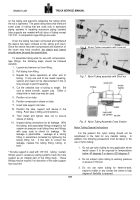TM-5-3805-254-14-P-2 - Page 160 of 894
TRUCK SERVICE MANUAL
CLEANING AND INSPECTION
1. Wash all metal parts in mineral spirits or
cleaning fluid.
2. Inspect inlet valve seat in cage assembly.
It
must be smooth and free from nicks.
3. Inspect rubber face of inlet valve (22) and
exhaust valve (18).
Wipe clean.
Replace if
worn, nicked or distorted.
4. Inspect lower end of plunger (11), it must be
perfectly smooth.
5. Inspect two seals (6).
If they are worn,
press
out of body (1) and replace.
6. Scrape all traces of old gaskets (20) from mating
surfaces of cage assembly (21) and cap (23)
and body (1).
7. Orifice in body must be free of dirt.
ASSEMBLY
1. Install spring (19) on exhaust valve stem (18)
and install in body cage (21).
Apply inlet valve
(22), nut (24), and tighten securely.
2. Install new gaskets (20) on body cage.
Install
cage assembly in body (1) with five lock washers
(26) and cap screws (25).
Tighten securely.
3. Hold plunger (11) with threads facing upward,
install diaphragm (12) with bead facing down,
retainer plate (4) and tighten nut (16).
4. Apply light lubricant to outside of diaphragm and
plunger assembly (11) and install in body.
5. Install diaphragm (8), retainer (10) and screw (9)
in cap (7).
6. Locate cap on body and install three cap screws
(3) with lock washers (2).
Install five bolts and
apply lock washers (14) and nuts (15).
Tighten
all cover bolts securely.
7. Use thread protectors in all pipe ports to prevent
dirt entering the valve assembly.
TEST
1. Connect 100 psi air pressure to reservoir port.
2. Install air gauge in cylinder port.
No leak allowed
at exhaust port or around cage and cover
gaskets.
3. Apply pressure to service port.
No leak allowed
at exhaust port or at assembly bolts.
158
BRAKES-AIR
Back to Top


